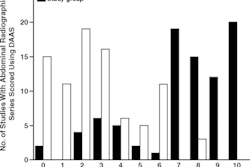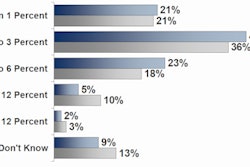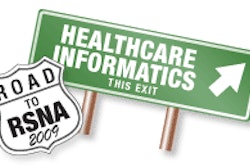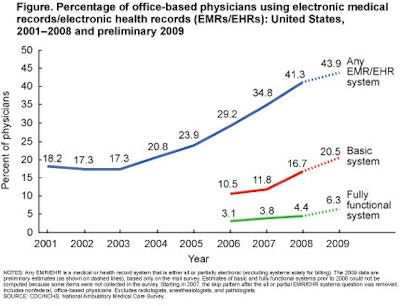
Physicians working in office-based practices in the U.S. increased their use of electronic medical records (EMR) or electronic health records (EHR) by 18.7% between 2007 and 2008, according to the results of a new survey.
In 2008, 41.5% of physicians reported that their practices had some basic level of computerized EMR/EHR functionality, compared to 34% in 2007, according to the survey conducted by the National Center for Health Statistics (NCHS) in Hyattsville, MD.
The center's annual National Ambulatory Medical Care Survey polled more than 5,000 physicians working in 112 geographic areas in all 50 states and the District of Columbia. The survey sample included all medical specialties except radiologists, anesthesiologists, and pathologists, and consisted of 3,200 in-person interviews and mailed questionnaires to 2,000 physicians.
The survey had a combined response rate of 64%, according to the report's lead author, Chun-Ju Hsiao, Ph.D., of the agency's division of healthcare statistics. NCHS is an agency of the U.S. Centers for Disease Control and Prevention and has been collecting EMR/EHR statistics since 2006.
Based on preliminary estimates from the survey, the authors estimate that the trend toward increased healthcare IT utilization is continuing, with 43.9% of physicians reporting at least basic EMR/EHR functionality.
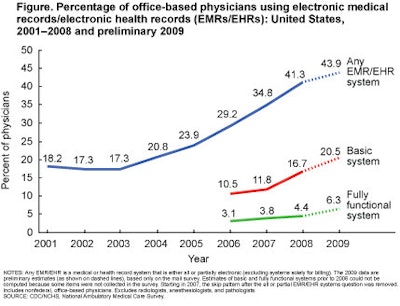 |
| From the National Center for Health Statistics Health E-Stat, "Electronic Medical Record/Electronic Health Record Use by Office-based Physicians: United States, 2008 and Preliminary 2009" |
NCHS defines basic systems as including patient demographic information, prescription orders, electronic clinical notes, and the ability to view laboratory and radiology reports electronically. In 2008, about 16.7% of physicians reported having systems that met these criteria, an increase of 4.9% from 2007.
Fully functional systems have the ability to enter medical history and follow-up, computerized physician order entry for prescriptions and tests, warnings of drug interactions or contraindications, and reminders for guideline-based interventions. For 2008, 4.4% of respondents stated that their office-based practices had this capability, compared to 3.8% in 2007.
Related Reading
Report: 70% of U.S. hospitals close to EMR adoption, April 7, 2009
About 40% of doctors use electronic records: CDC, December 15, 2008
Copyright © 2010 AuntMinnie.com





